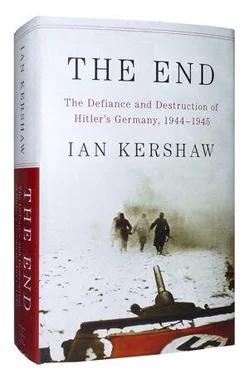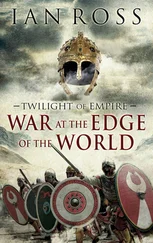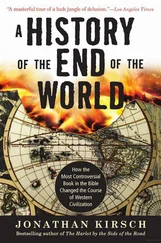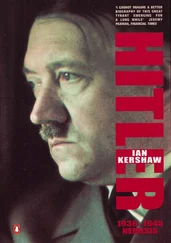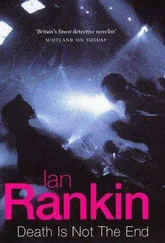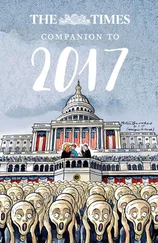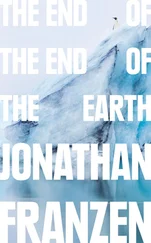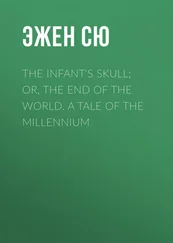Ian Kershaw
THE END
The Defiance and Destruction of Hitler’s Germany, 1944–1945
1. Martin Bormann, c . 1942 (photograph: akg-images)
2. Heinrich Himmler, c . 1943 (photograph: Scala, Florence/Walter Frentz Collection)
3. Joseph Goebbels, 1942 (photograph: Scala, Florence/Walter Frentz Collection)
4. Albert Speer, 1942 (photograph: Scala, Florence/Walter Frentz Collection)
5. Captured German prisoners near Falaise, September 1944 (photograph: Topfoto)
6. German civilians evacuate Aachen, October 1944 (photograph: Bettmann/Corbis)
7. Wilhelm Keitel (undated) (photograph: Scala, Florence/Walter Frentz Collection)
8. Alfred Jodl, 1944 (photograph: Ullsteinbild/Topfoto)
9. Heinz Guderian, 1944 (photograph: Ullsteinbild/Topfoto)
10. Karl Dönitz, c . 1943 (photograph: Scala, Florence/Walter Frentz Collection)
11. Digging a trench near Tilsit, September 1944 (photograph: Scala, Florence/BPK)
12. Erich Koch on inspection in East Prussia, August 1944 (photograph: Ullsteinbild/Topfoto)
13. German soldiers viewing corpses, Nemmersdorf, October 1944 (photograph: akg-images)
14. The Ardennes offensive, December 1944 (photograph: Heinz Rutkowski (Scherl)/Bundesarchiv, Koblenz)
15. Walter Model, 1941 (photograph: akg-images/Ullsteinbild)
16. Georg-Hans Reinhardt, 1939 (photograph: Scala, Florence/BPK)
17. Ferdinand Schörner, 1942 (photograph: Scala, Florence/BPK)
18. Gotthard Heinrici, 1943 (photograph: Scala, Florence/Walter Frentz Collection)
19. Volkssturm men on the eastern front, October 1944 (photograph: Ullsteinbild/Topfoto)
20. Volkssturm men march past Goebbels, November 1944 (photograph: Bundesarchiv, Koblenz)
21. Arthur Greiser, 1939 (photograph: Scala, Florence/BPK)
22. Josef Grohé, 1944 (photograph: Scala, Florence/BPK)
23. Karl Hanke, c . 1942 (photograph: Ullsteinbild/Topfoto)
24. Karl Holz (undated) (photograph: Bundesarchiv, Koblenz)
25. Refugees crossing the Frisches Haff, February 1945 (photograph: Vinzenz Engel/ Scala, Florence/BPK)
26. Abandoned wagon in East Prussia, January 1945 (photograph: Mary Evans/ Suddeutscher Verlag)
27. Flying court-martial, location unknown, probably 1944/5 (photograph: Ullsteinbild/Topfoto)
28. Hanged German officer, Vienna, April 1945 (photograph: akg-images/Interfoto/AWKZ)
29. Overcrowded boat from Pillau crossing the Baltic Sea, March 1945 (photograph: akg-images)
30. Dresden, February 1945 (photograph: Scala, Florence/BPK/Walter Hahn)
31. Nuremberg, March 1945 (photograph: Scala, Florence/Walter Frentz Collection)
32. Young Germans cycling to the front, February 1945 (photograph: Scala, Florence/BPK)
33. Berlin, April 1944 (photograph: Deutsches Historisches Museum, Berlin (Inv.-Nr.: F 66/911))
34. Photograph from a series taken by the US Army immediately after the liberation of Buchenwald concentration camp, Weimar, April 1945 (photograph: ITS Archives, Bad Arolsen (Exhibit B-1, Numbers 1-28, Set No 5, Picture No. 2))
35. Prisoners on a death march from Dachau, April 1945 (photograph: private collection, courtesy KZ Gedenkstätte Dachau)
36. Germans surrender to the Red Army, Königsberg, April 1945 (photograph: Deutsches Historisches Museum, Berlin (Inv.-Nr.: F 61/1661))
37. Houses display white flags in Worms, March 1945 (photograph: Scala, Florence/BPK)
38. Heinrich von Vietinghoff, 1944 (photograph Scala, Florence/BPK)
39. Karl Wolff, 1942 (photograph: Scala, Florence/Walter Frentz Collection)
40. Keitel signs the complete German capitulation, 8 May 1945 (photograph: Bundesarchiv, Koblenz)
41. An angel on the spire of Freiburg minster, 1946 (photograph: Scala, Florence/Walter Frentz Collection)
1. The European fronts, July 1944
2. The Allied breakthrough in the West, June to September 1944
3. The Red Army’s advance, June to August 1944
4. East Prussia
5. The Ardennes offensive
6. The Red Army’s January 1945 offensive
7. The Collapse of the Third Reich, March 1945
8. Dönitz’s Reich, 1 May 1945
9. Europe at the final surrender
One of the most pleasant parts of finishing a book is to thank those who, in different ways, have contributed to the making of it.
My thanks first of all to the British Academy for a grant which helped me to undertake the initial, exploratory research. I am also grateful to the archivists and staff of the various record repositories where I have worked: the Bundesarchiv in Berlin/Lichterfelde, the Bundesarchiv/Militärarchiv in Freiburg, the Bibliothek für Zeitgeschichte in Stuttgart, the Bayerisches Hauptstaatsarchiv and Staatsarchiv München, the Staatsarchiv Augsburg, the International Tracing Service, Bad Arolsen, the National Archives in London, the Imperial War Museum at Duxford, and the Liddell Hart Centre for Military Archives in King’s College, London. At the Bibliothek für Zeitgeschichte in Stuttgart, part of the Württembergische Landesbibliothek, I had every reason to be most grateful for the help and advice of the library’s director and good friend of mine, Professor Gerhard Hirschfeld, and the head of its archival collections, Dr Irina Renz. Dr Susanne Urban was most helpful in guiding me through the extensive sources related to the death marches—only recently opened to researchers—at the International Tracing Service in Bad Arolsen, where I would also like to express my thanks to the director, M. Jean-Luc Blondel. At Duxford, I benefited greatly from Dr Stephen Walton’s expert assistance in consulting the valuable holdings of German documents. I started, and finished, the research for the book in the incomparable Institut für Zeitgeschichte in Munich, where I have had the good fortune to be a welcome guest for many years, and I would like to express my warmest thanks to the director, Professor Horst Möller, and his colleagues, especially the library and archives staff, who as always dealt with my many requests with unfailing courtesy and friendliness.
Professor Otto Dov Kulka (Jerusalem), a highly esteemed colleague and friend with whom I have shared a lengthy and fruitful correspondence over many years, first pointed me in the direction of the records at Bad Arolsen. Beyond that, as ever I have been extremely grateful for his interest in my work, and for his valuable suggestions. Laurence Rees, good friend and brilliant producer of television documentaries, was kind enough to make available to me relevant transcripts of interviews, kept in the BBC Archives in London, from one of the series on which we collaborated, offered excellent advice, and was as always stimulating company, cheerfully helpful and most encouraging.
Numerous other friends and colleagues also helped, sometimes perhaps without being aware of how helpful they had been. Among them, I owe thanks to Professor Daniel Blatman (Jerusalem), for answering a number of queries about the death marches, and for related material which he kindly sent me. Dr Andreas Kunz, of the Bundesarchiv/Militärarchiv in Freiburg, gave me some valuable tips on relevant archival holdings on my first visit there in connection with this project. Dr Heinrich Schwendemann of the University of Freiburg most generously went to great lengths to send me documents related to the French occupation of south-west Germany in 1945 and other relevant material that was not easy for me to access. Other colleagues who also supplied me with documents, papers or other materials, provided answers to my questions, or made me think more clearly about what I was attempting include Professor John Breuilly, Dr Michael Buddrus, Mr George Burton, Dr Simone Erpel, Dr Wolfgang Holl, Dr Holger Impekoven, Professor Tim Kirk, Dr Michael Kloft, Dr Alexander Korb, Mr Michael D. Miller, Professor Bob Moore (who went to undue trouble to send me a batch of documents on a specific point related to the Netherlands, his chief area of expertise), Professor Jonathan Steinberg, Dr Klaus Wiegrefe and Dr Benjamin Ziemann. I am glad of the opportunity to extend my warm thanks to all and apologize to anyone whom I have inadvertently omitted.
Читать дальше
